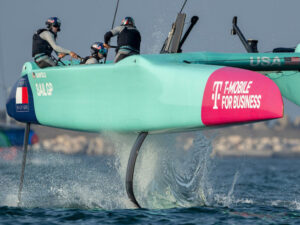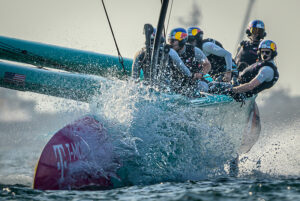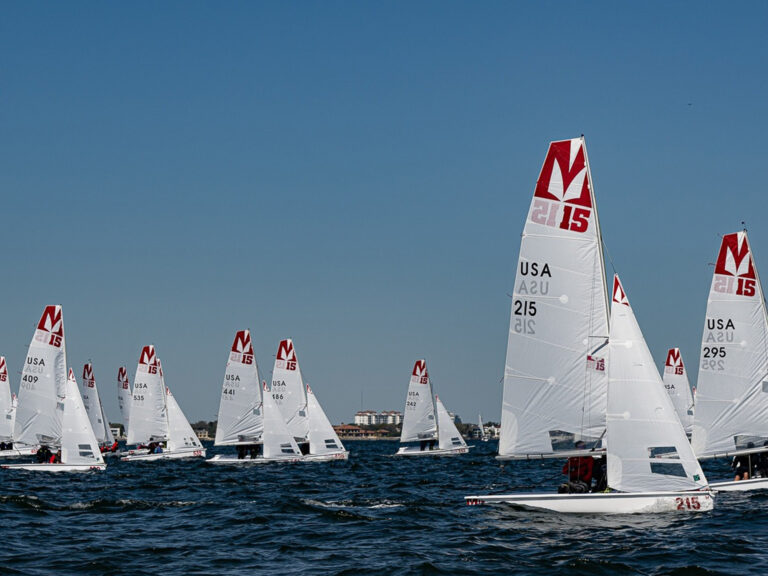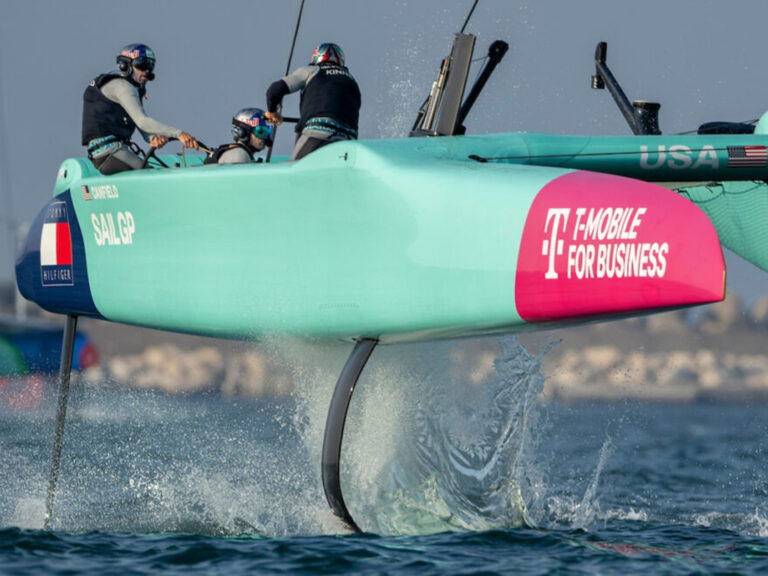Quick: what’s the most successful, stable, one-design dinghy class in world history?
Answer: the Laser, of course, now rolling past 200,000 boats worldwide. In fact, in celebration of this milestone, you can win a new boat with the iconic 200000 sail number

www.lax-sailing.org
But wait! Is that the rumble of revolution I hear growing louder with each passing sailing day? Why are there so many Laser sailors out there on the water with crisp, new sails that—gasp!—aren’t made by class-approved sailmakers North and Hyde? And that aren’t even legal?
Welcome to the Great Laser Practice-Sail Brouhaha, brought to you by shrewd marketers at Intensity Sails and Annapolis Performance Sailing. Although they measure a mere 76 square feet of cloth, class-legal Laser sails from North and Hyde cost a wallet-busting $563.50 and $595, respectively. (It even hurts to write that.) Since a new sail is a lot faster than a clapped-out old sail, casual Laser sailors across the globe have long been confronted with a painful dilemma: dig deep into their savings to try and stay competitive with the free-spenders in their fleet, or sail with a handicap.
Intensity and APS heard the complaints, and like the good entrepreneurs that they are, came up with an alternative: a Laser sail that is identical (or at least as identical as reverse-engineering the North and Hyde sails could make it) to the class-legal sails, but built from more durable cloth and available at a fraction of the cost. Intensity’s price is $179.99, while APS sells the sail for $179.95. And that includes a clew strap, battens, sail numbers and a bag! (Intensity has a sail-only option for $134.99)! The only thing missing is the red button that means the sail is class legal, and both businesses are very upfront about this.
Technically, you need a class-legal sail to race legally in a Laser class event. But here’s how Laser sailors have responded: they’re voting with their wallets and the knockoff sails are flying off the shelves (APS, in fact, is sold out right now). And Laser fleets around the country seem perfectly comfortable with the fact that “illegal” sails are now common at casual frostbite and weeknight regattas.
From the Laser sailor perspective, it makes perfect sense. Why sail with a raggedy old class-legal sail, when for a pretty reasonable price, you can buy and use a new practice sail (and save your expensive class-legal sail for serious regattas)?
The excellent Laser blogger Tillerman over at Proper Course has explored the fairness issues behind all this, as well as determined—via a painstaking reading of the class rules (that no doubt required more than a pint or two for courage)—that there’s no way that the knockoff sails will ever be class-sanctioned at any level of racing. That hasn’t really bothered many sailors, and there are a few racers in my local Potomac River Sailing Association Laser fleet who are happily using them for this frostbite season.
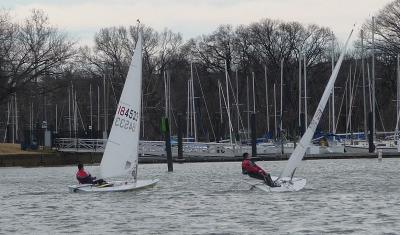
www.googleusercontent.com
_Can you spot the “illegal” sail? Hah, trick question, they’re BOTH illegal!
_
The party, of course, would come to an end if some jerk with a class-legal sail—who actually cares about winning the frostbite and doesn’t care about having friends—decided to protest the practice sails as illegal. The esteemed Tillerman believes that this possibility could lead to the creation of a separate Laser class that formally allows the practice sails. But so far this has been a peaceful revolution.
That doesn’t mean that the Laser class office isn’t nervous. I checked in with Sherri Campbell, executive secretary of the International Laser Class Association’s North American region. She said that the class is sympathetic to the issue of cost, and that North and Hyde will (eventually) be coming out with a new Laser sail design that uses a better cloth. But the bottom line is that the practice sail is an issue. “In effect, when you go Laser racing, you are supposed to go by class rules,” she says. “If you have a sail that is not class legal, then effectively you are not racing a Laser.”
Campbell also noted that widespread acceptance of the practice sails could also be the proverbial camel’s nose in the tent, encouraging acceptance and use of other Laser knockoff parts, so it becomes increasingly difficult to know who is racing a class-legal Laser. That might mean tedious and time-wasting pre-regatta measurement of boats and equipment before major regattas. “That’s been one of the real beauties of the Laser class,” Campbell says. “You can walk up, show your registration, and go racing.”

www.flickr.com
_Is this what registration at a future Laser Worlds will look like?
_
The good people at APS at least so far don’t believe they’re in the process of killing the Laser one-design class. Product manager James McKenna, who sails with the APS practice sail in casual racing, notes that his company already sells knockoff Laser parts, but not many people buy them. The reason: the price differential is simply not great enough to prompt Laser sailors to go rogue. A “recreational” daggerboard at APS, for example, is $357, versus $485 for the (drool) awesome new class-legal GRP daggerboard.
Since it’s all about the money, the Great Laser Practice-Sail Brouhaha can be resolved in one simple way: by North and Hyde bringing down their prices for a new class-legal sail. That hasn’t happened yet. But here’s hoping.



